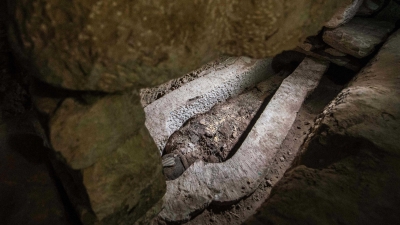
The word ‘mummy’ comes from an ancient Egyptian word meaning ‘tar’ or ‘bitumen’. Egyptian embalmers used many products in their craft such as bees-wax, cassia (a type of cinnamon), juniper oil, onions, palm wine, resin salt, sawdust, pitch, soda and bitumen to keep the corpses of the rich and the mighty from rotting.
The bodies were wrapped in linen bandages, clothed in funerary garments and adorned with necklaces and amulets. On the face of the deceased there was placed a mask made of rough canvas and chalk, but for dead pharaohs and high dignitaries this mask was made of gold. Poor people were mummified in any haphazard way and paupers were simply thrown without ceremony into a common grave.
The embalmed body of the deceased was buried together with objects which that person had used during his earthly life and which he might need in the next. Naturally, the graves of the dead reflected their social status during life. He tombs of the pharaohs were magnificent structures full of precious treasures and costly objects.
Picture Credit : Google
